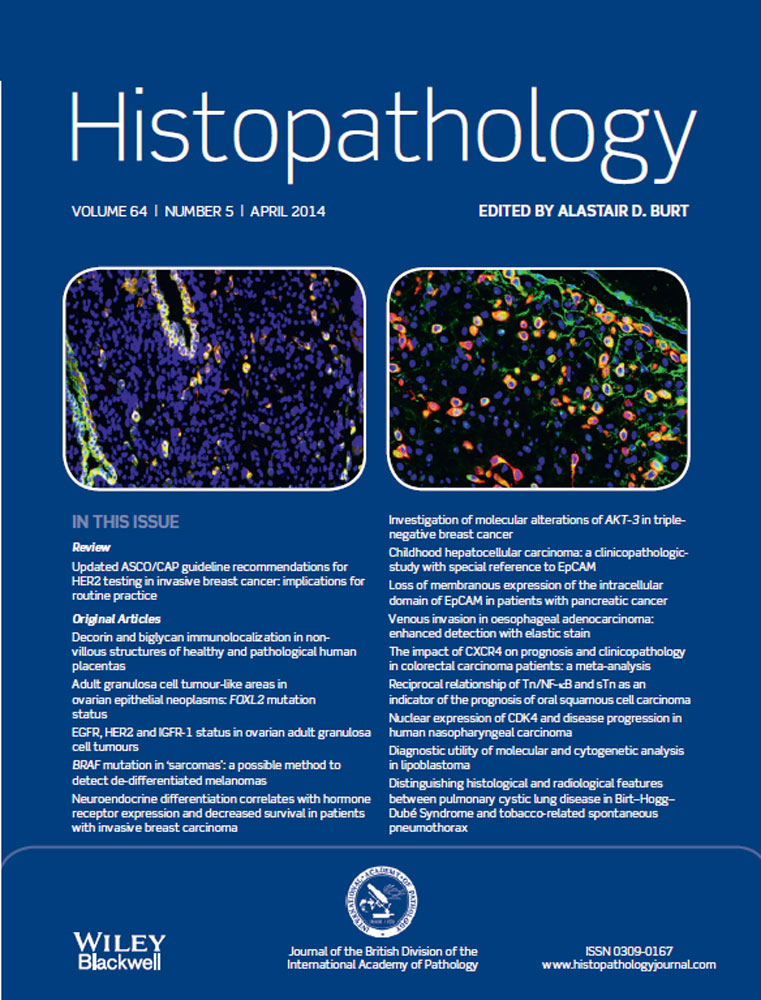BRAF mutation in ‘sarcomas’: a possible method to detect de-differentiated melanomas
Abstract
Aims
BRAF is mutated in 50–60% of melanomas, but BRAF mutation in sarcomas has not been systematically evaluated. Some melanomas are spindled and may show no immunohistochemical evidence of melanocytic differentiation. Similarly, many sarcomas are undifferentiated, i.e. undifferentiated pleomorphic sarcomas (UPS). Diagnosing melanoma versus sarcoma in an undifferentiated spindle cell malignancy can be challenging. Our aim was to evaluate the prevalence of BRAF mutation in sarcomas and the use of BRAF mutational status in the diagnosis of spindle cell malignancies.
Methods and results
BRAF mutational analysis was performed on tissue from 104 patients: 90 with sarcoma only (50 UPS) and 14 with sarcoma and melanoma (seven UPS). In the sarcoma-only group, BRAF mutation was absent. In the sarcoma–melanoma group, three sarcomas showed BRAF mutation; all were UPS, occurred after the melanomas and did not stain for melanocytic markers. One melanoma–sarcoma pair showed identical BRAF V600E mutations.
Conclusions
The presence of BRAF mutation in these tumours raises the possibility that poorly differentiated spindle cell malignancies with BRAF mutation may represent melanomas, and BRAF mutational analysis should be considered in a patient with a spindle cell malignancy and a history of melanoma, as a positive result may indicate de-differentiated melanoma.




